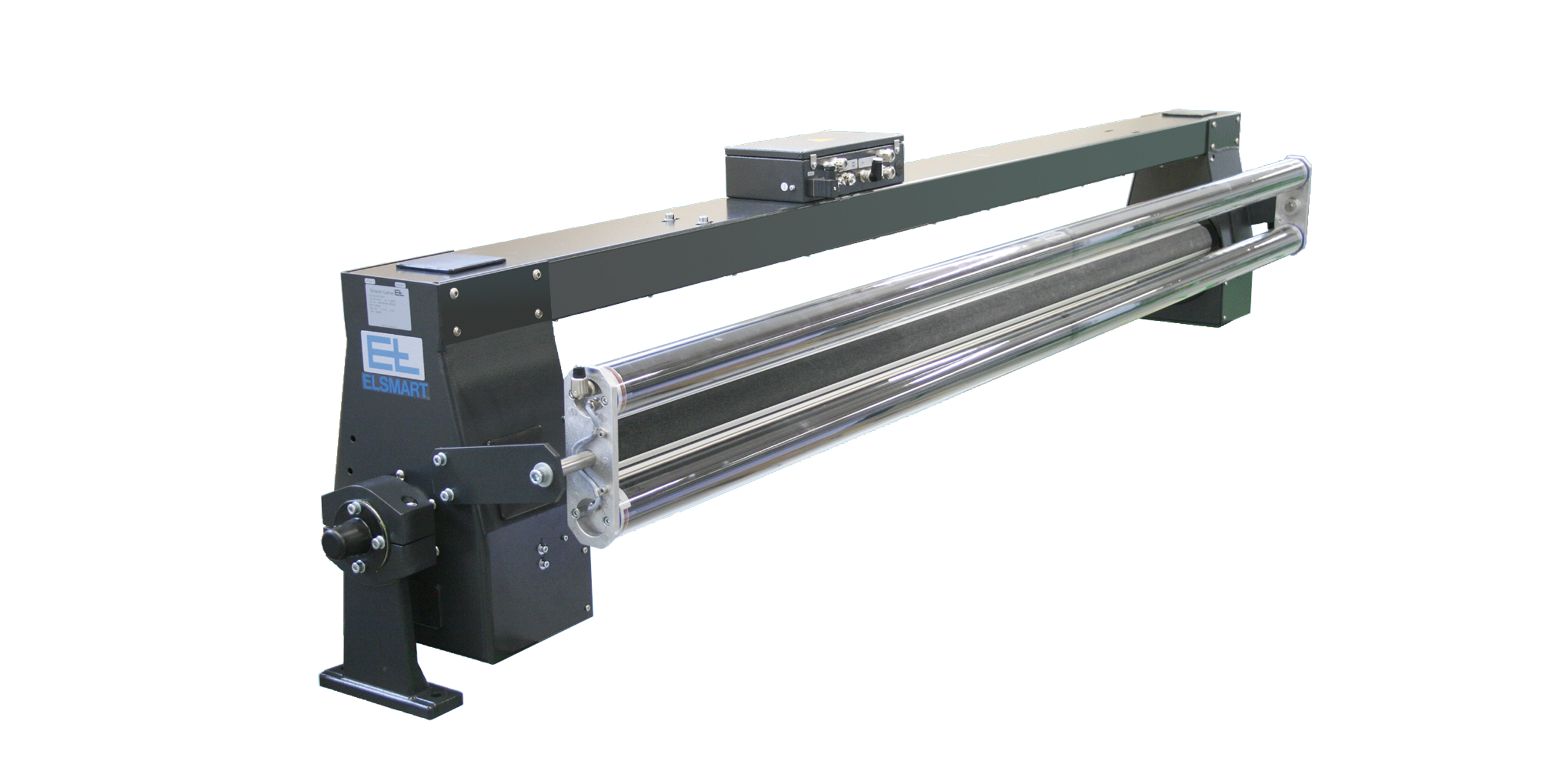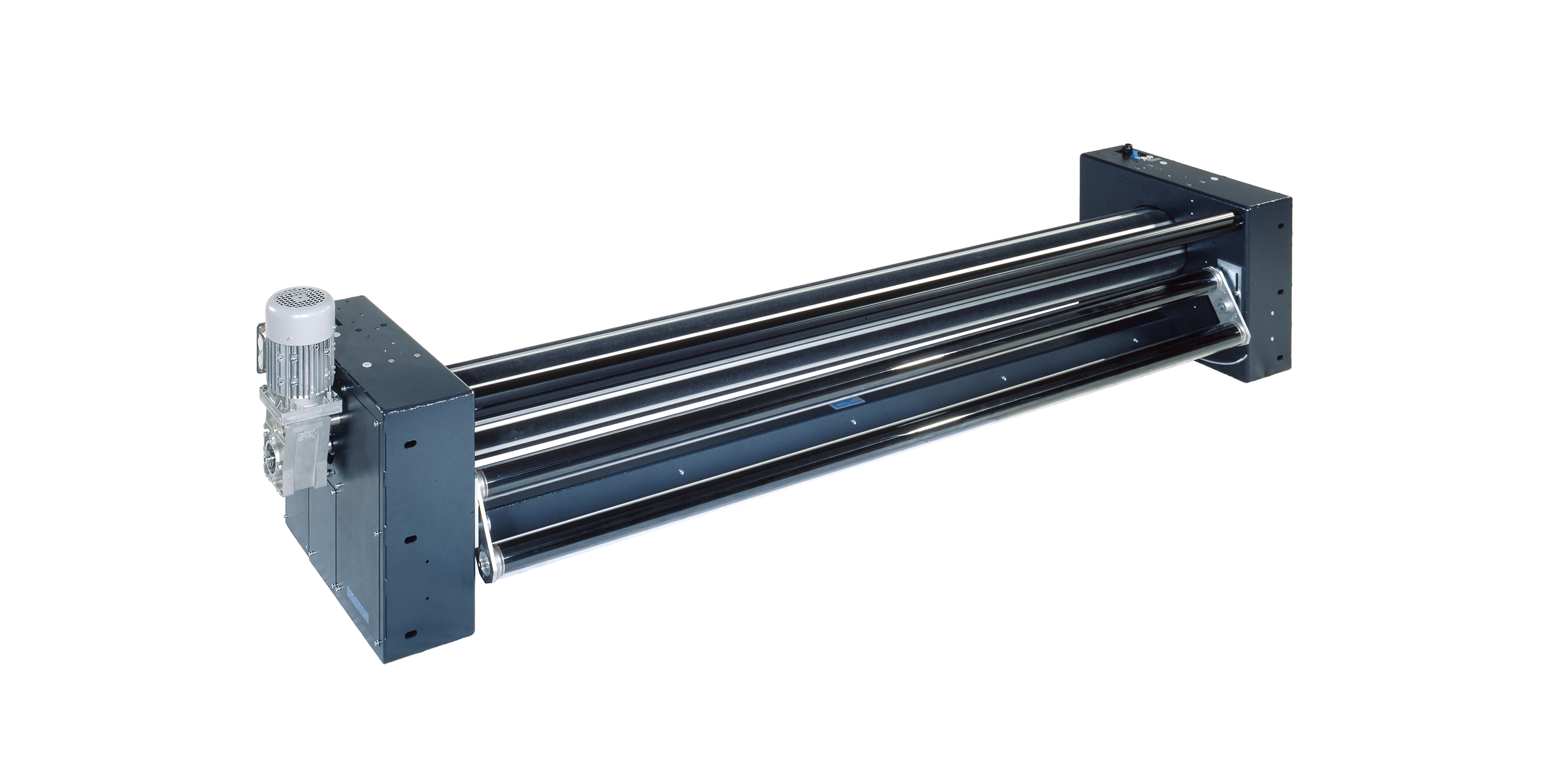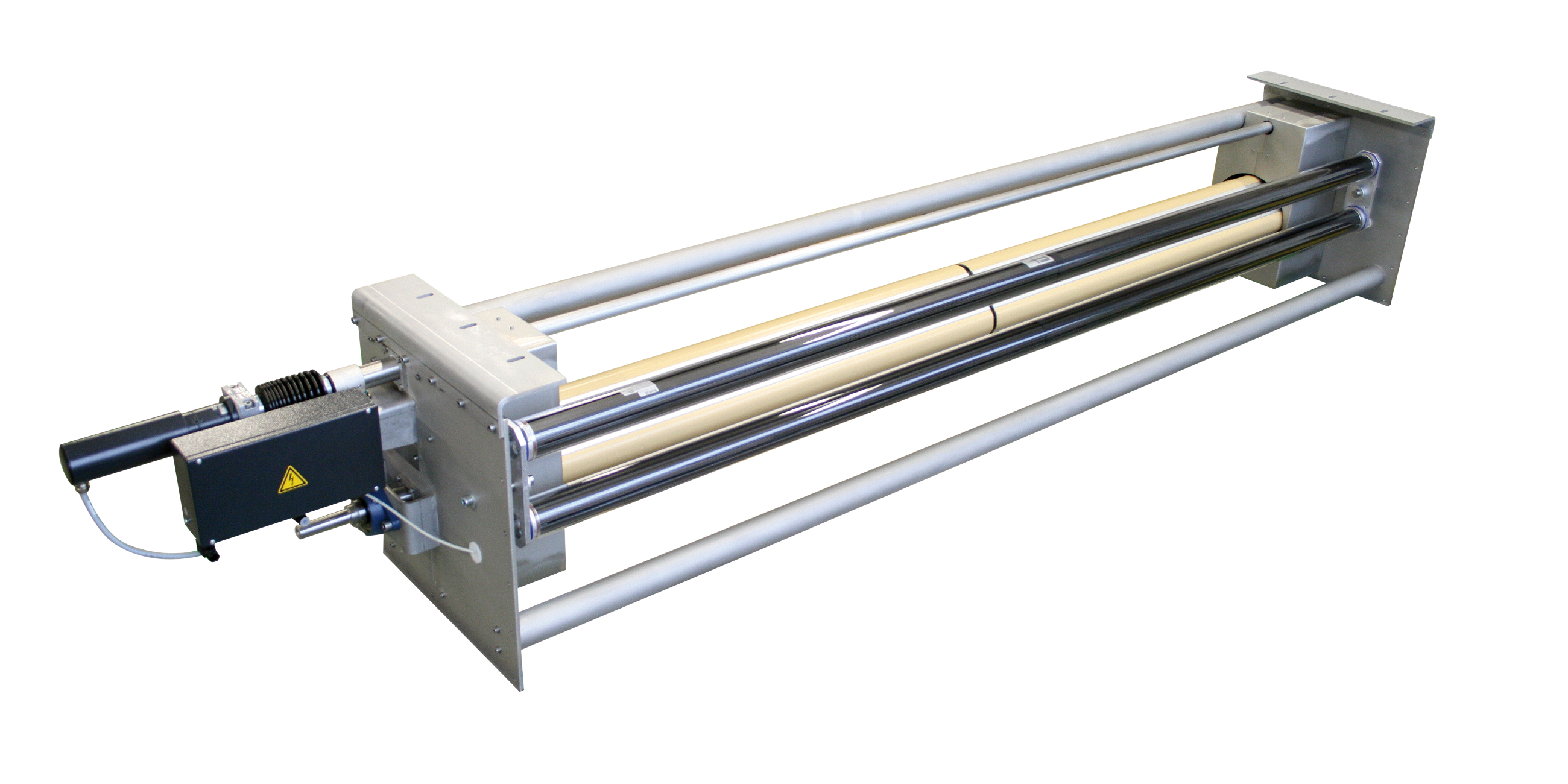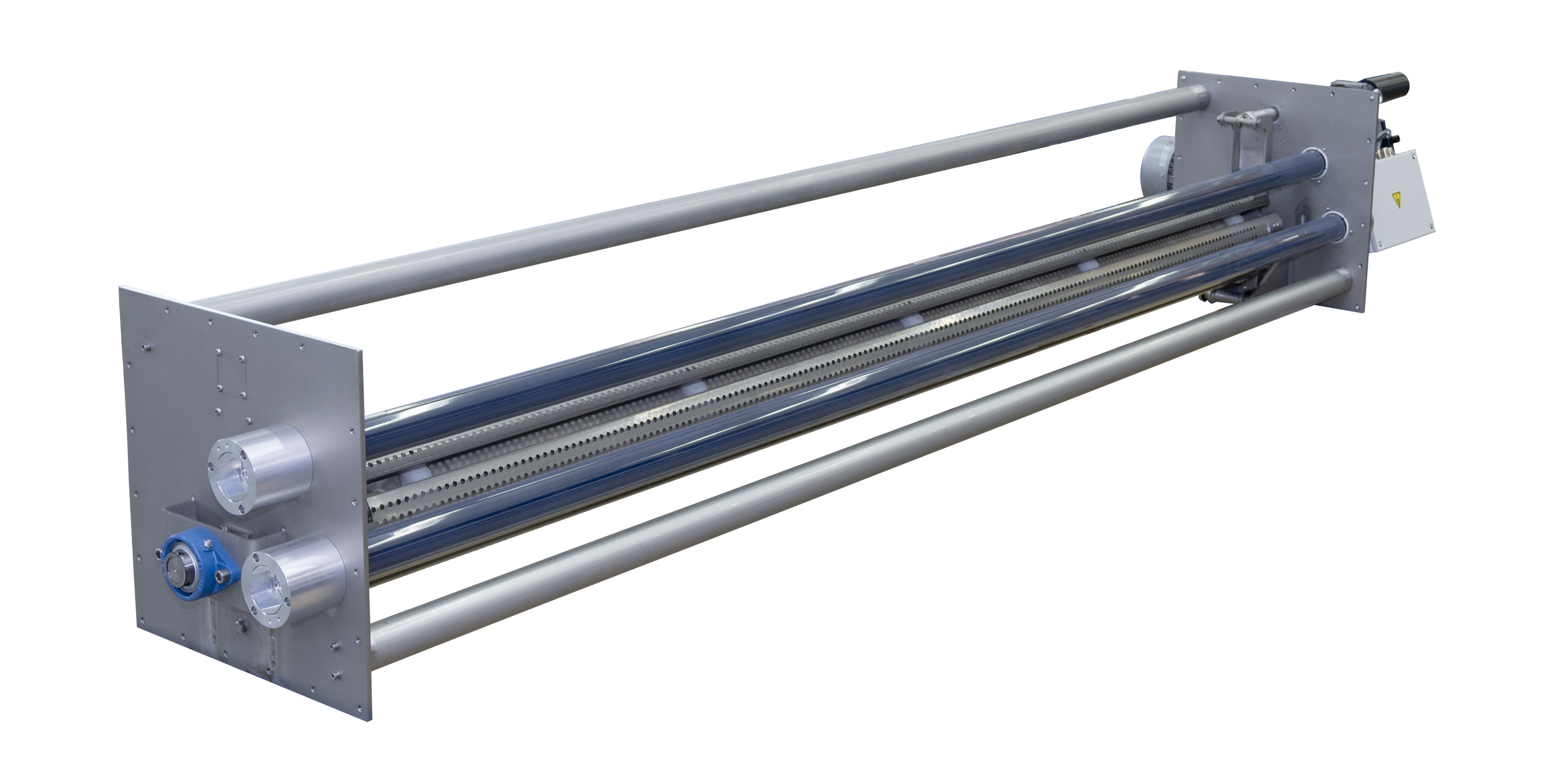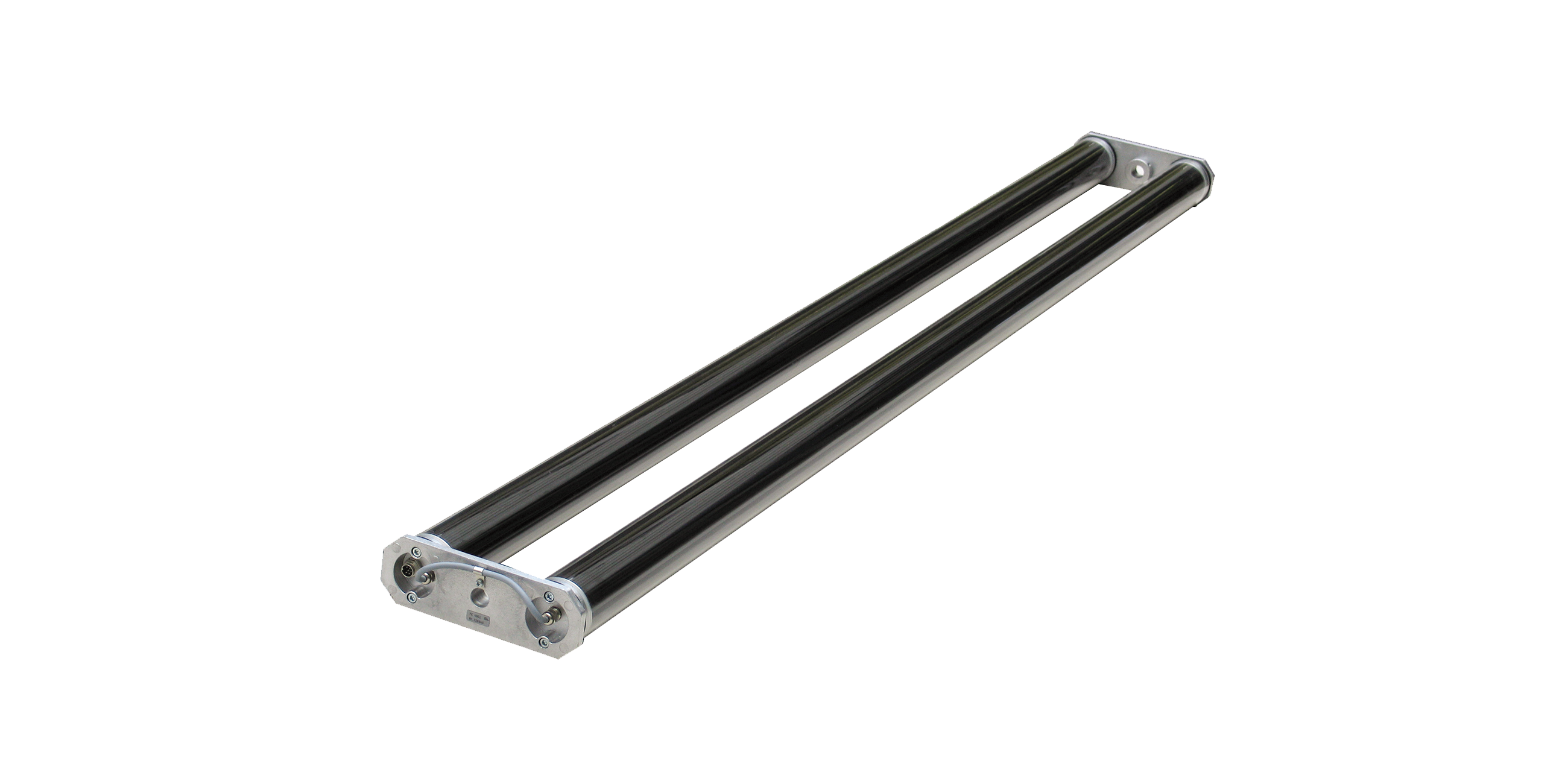- Description
- Function drawing
Function
Guide profiles arranged around the circumference form the basis of the web guiding. In the basic version, the guide profiles are fixed to a guide plate so that they can be adjusted to the side via an actuating drive. In the case of segmented guide profiles, both guide plates are connected with a push rod and adjusted synchronously via an actuating drive. This means that, in addition to the web guiding function, the system also acts as a spreader on the textile web.
Area of use
Due to the minimal stress applied to the material by the segmented roller guider, the ELSMART system for web guiding and spreading can be used in almost all textile production processes. The prerequisite here is that the textile web does not display surface stability.
Application
Web guiding and spreading systems can be used freely in terms of position. Wrapping of 90° is always required. The infeed path should be at least one web width. By contrast, the exit should be kept as short as possible. Rolled-in edges can be rolled out in the infeed plane with the aid of an additional selvedge opening device.

Legend
A-A = Web tension distribution in the control section | B-B = Web tension distribution at outfeed | K = Correction of the web guiding | a = Wrapping angle 90° | F1 = Basic web tension at infeed | F2 = Web tension at the outfeed | AB = Operating width | 1 = Swivel axis | 2 = Infeed roller/road | 3 = Segment control roller | 4 = Sensor | 5 = Locking roller | L1 = Infeed path | L2 = Outfeed path



